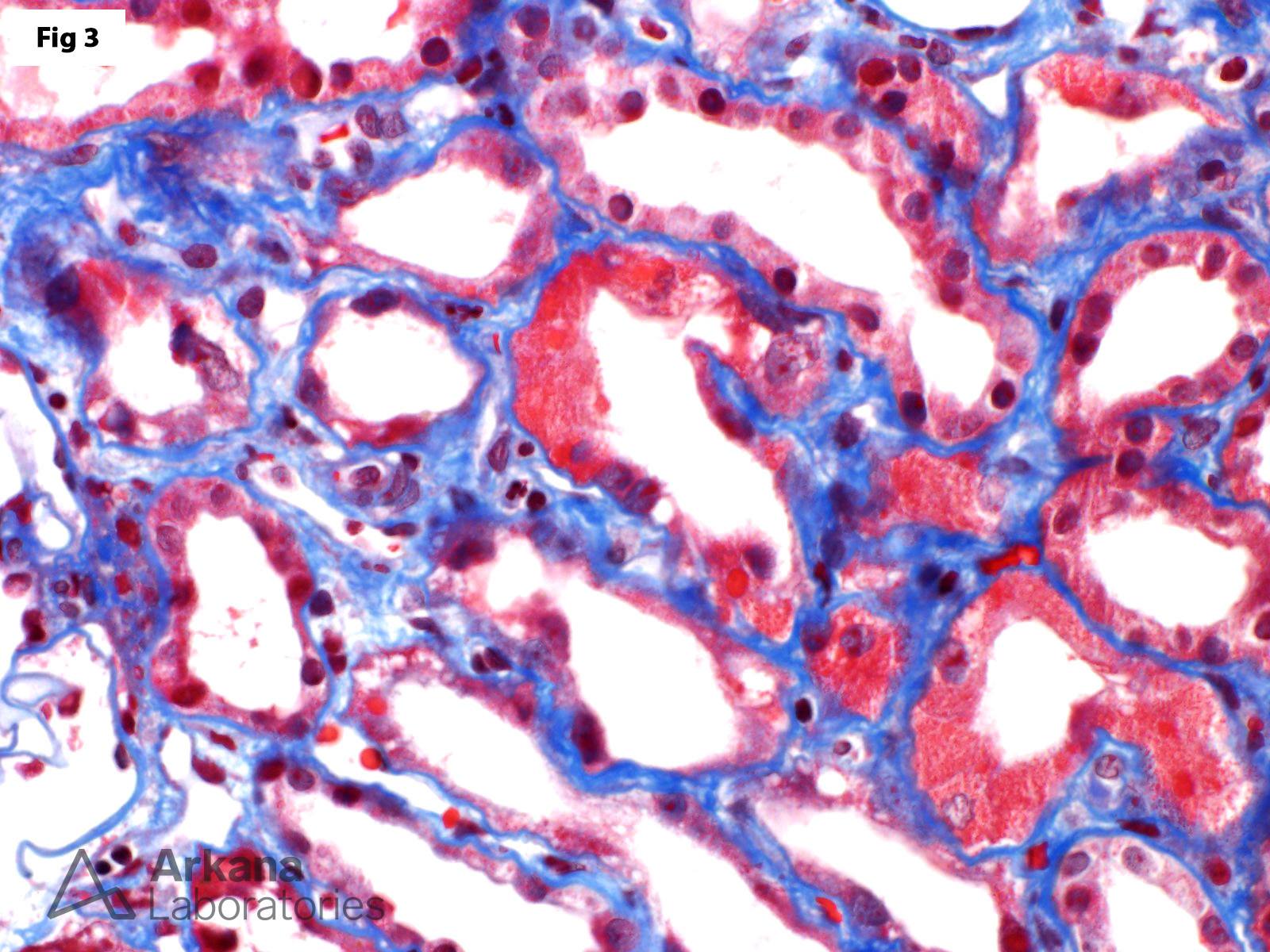A wide variety of prescription and over the counter drugs may cause toxic injury to the renal tubular epithelium. Given the morphologic overlap of acute tubular injury secondary to different etiologic agents, determination of the offending drug is usually not possible by morphology alone and clinico-pathological correlation is often, if not always, needed. However, there are certain drugs that yield a quite characteristic pattern of injury which enables the pathologist to suggest a possible etiology. Such is the case of tenofovir, a nucleotide analog reverse-transcriptase inhibitor frequently used to treat and prevent HIV infection. Histologic findings in patients with tenofovir-associated nephropathy include dilated proximal tubules lined by a markedly attenuated and frequently denuded epithelium (Figure 1), with frequent karyomegaly (Figure 2) and loss of the proximal tubular brush border. Furthermore, megamitochondria are occasionally present, identified as round eosinophilic and fuchsinophilic cytoplasmic inclusions (Figure 3).
Quick note: This post is to be used for informational purposes only and does not constitute medical or health advice. Each person should consult their own doctor with respect to matters referenced. Arkana Laboratories assumes no liability for actions taken in reliance upon the information contained herein.





